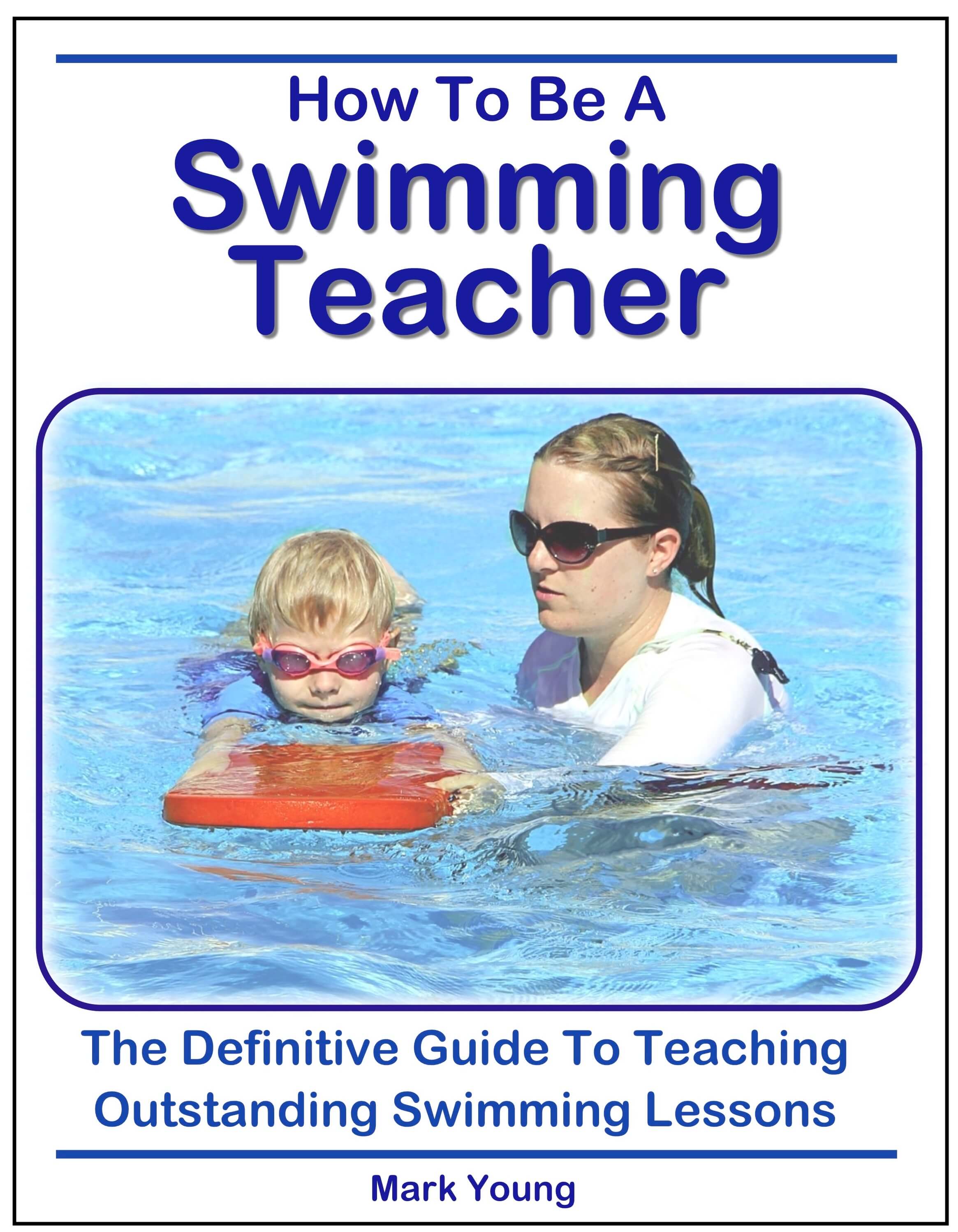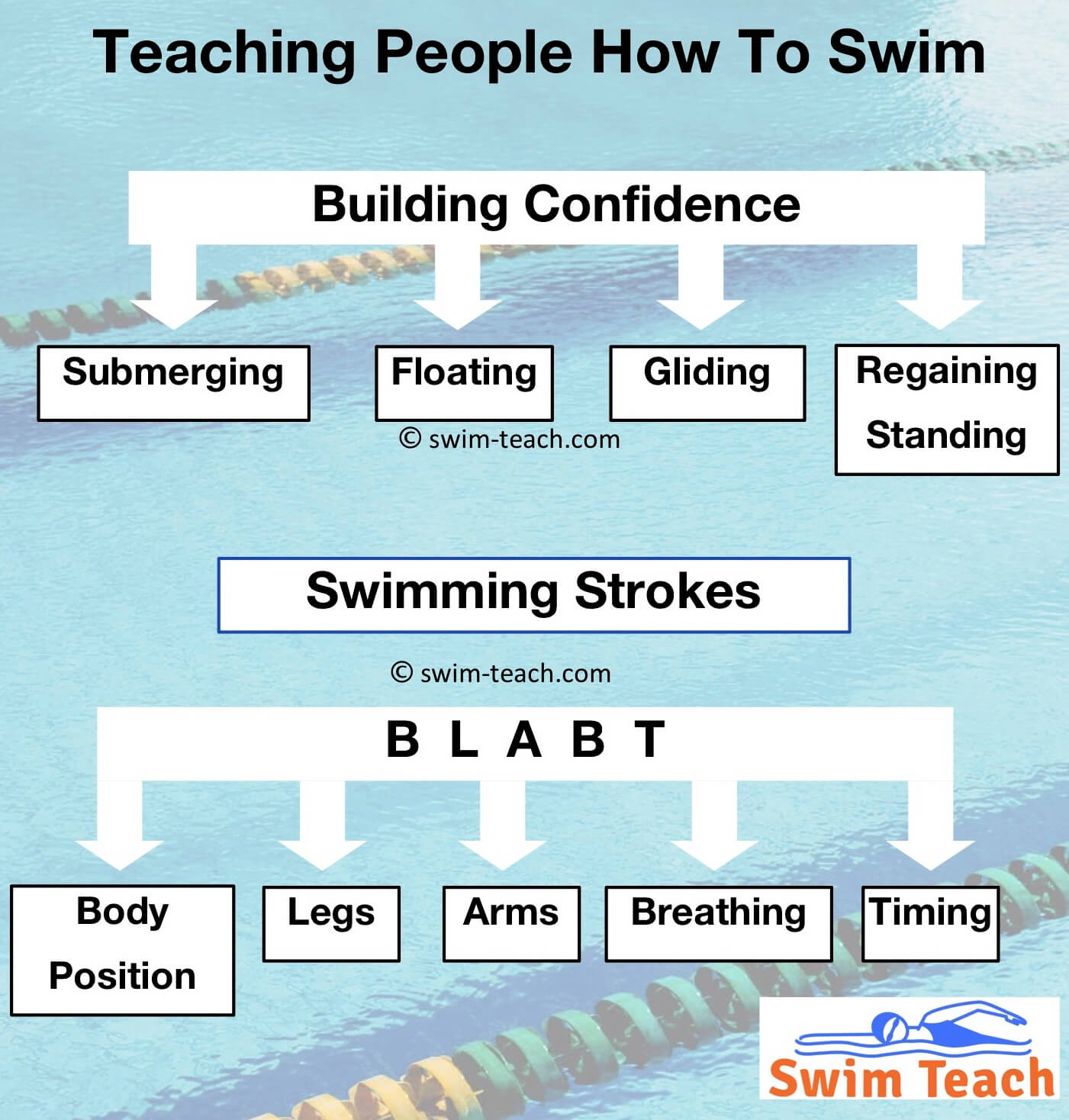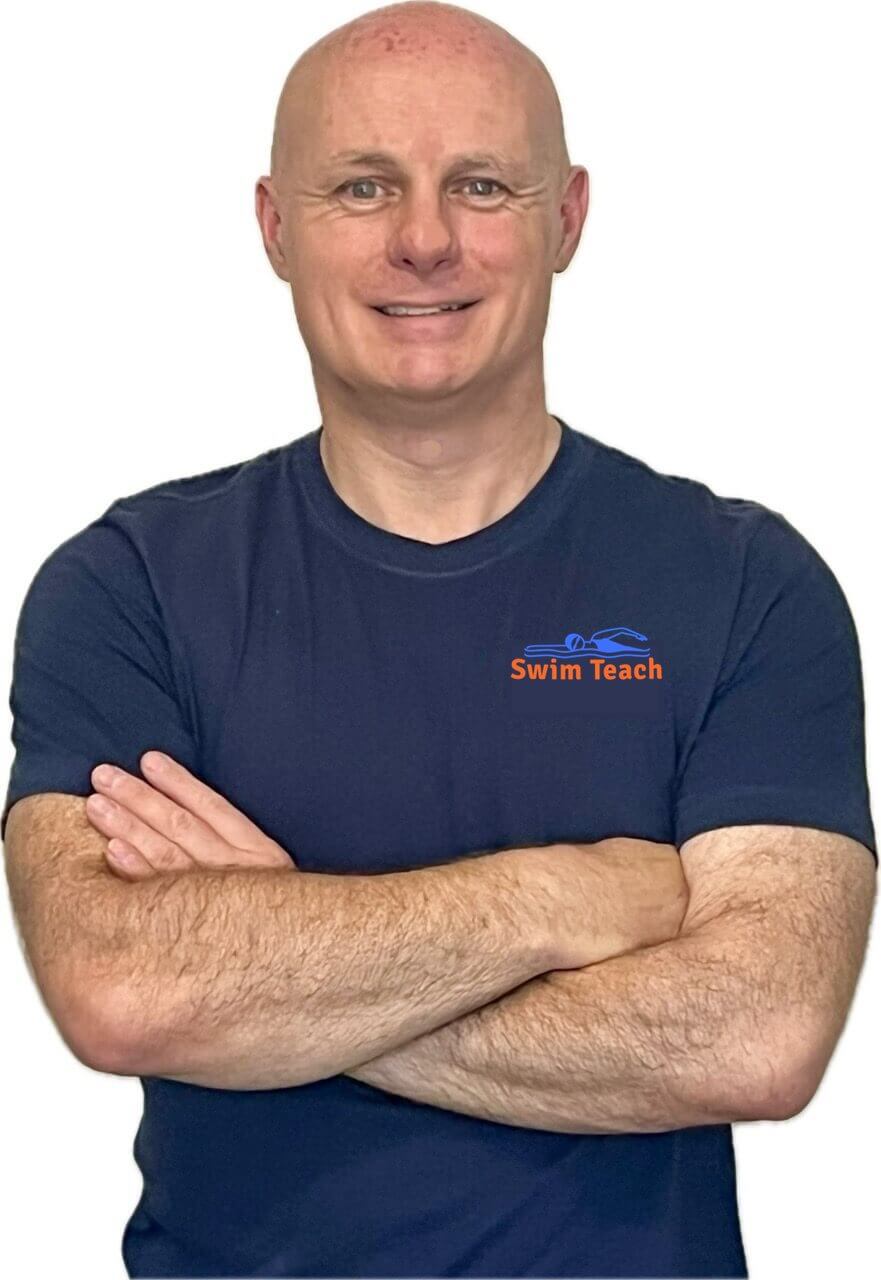- Swim Teach Home
- How to Teach Swimming Lessons
- teaching people to swim
Teaching People How To Swim
Teaching people how to swim is one of the most rewarding jobs you could wish to do. There are, however, some essential parts that must be covered if you are to be successful.
Teaching swimming should be carried out by someone suitably trained, so if you’re not, then get yourself qualified.
Being a successful swimming teacher, a professional approach, a bright personality, and bags of patience and understanding are vital to building confidence and establishing rapport. Click here for more about the qualities of a swimming teacher.
Essential Parts To Teaching People How To Swim
Confidence Building
Installing water confidence in a non-swimmer is key to a successful outcome, so break down confidence-building into these areas:
- Submerging
- Floating
- Regaining standing
- Gliding
Submerging
Teaching your pupils how to submerge is a great place to start. Slowly and gradually at first, especially if they are nervous or have any fear of the water. Teach them to hold their breath and slowly submerge in standing depth water. They can be holding the poolside as they do if it makes them feel more secure.
Floating
Not everyone naturally floats in a stationary position, but everyone can learn to stay up as they move through the water. Teaching your pupils to experience floating, both on the front and back, is ideal for boosting water confidence. Teach your pupils to star float with legs and arms stretched out in a star shape – prone (face down) once they can hold their breath and supine (face up). Support can be given with buoyancy aids or manually from yourself.
Regaining Standing
One of the most neglected parts of teaching swimming is how to regain a standing position from floating or moving through the water. Teach your pupils how to bend their knees and use their arms to pull themselves up and place their feet on the pool floor. Once your pupils have been taught that they can stand up again, watch their confidence sky-rocket.
Gliding
Teaching your pupils how to glide gives them a baseline starting point for swimming the basic strokes. Teach them how to ‘push and glide’ from the poolside and create a stretched out streamlined position so they can cut efficiently through the water.
Swimming Strokes – BLABT
Teaching each of the four basic swimming strokes involves breaking the stroke into its separate parts. For this, use BLABT (body position, legs, arms, breathing and timing) and use individual drills to teach each stroke part.
How To Be A Successful Swimming Teacher
Discover the essential qualities that every swimming teacher should have when teaching people how to swim, along with a breakdown of the basic swimming strokes and 82 separate drills to include when teaching your swimming lessons - everything you need in one downloadable ebook.
 How To Be A Swimming Teacher
How To Be A Swimming Teacher$19.99

I am a member of the Amazon Associates Program and I will earn a commission from qualifying purchases at no extra cost to you.




